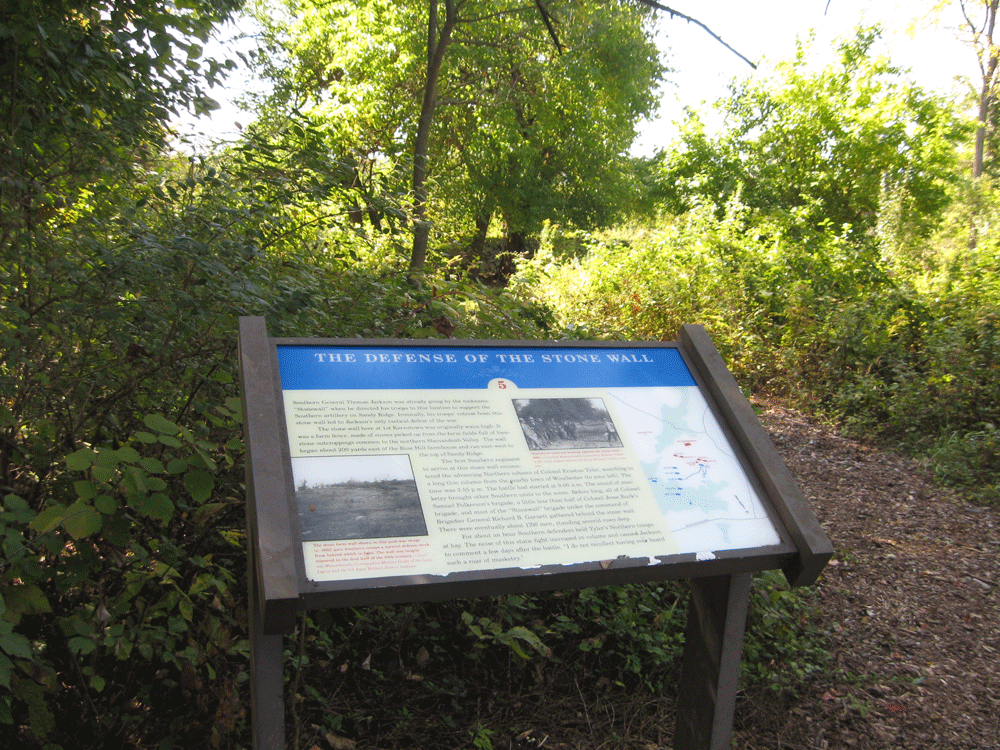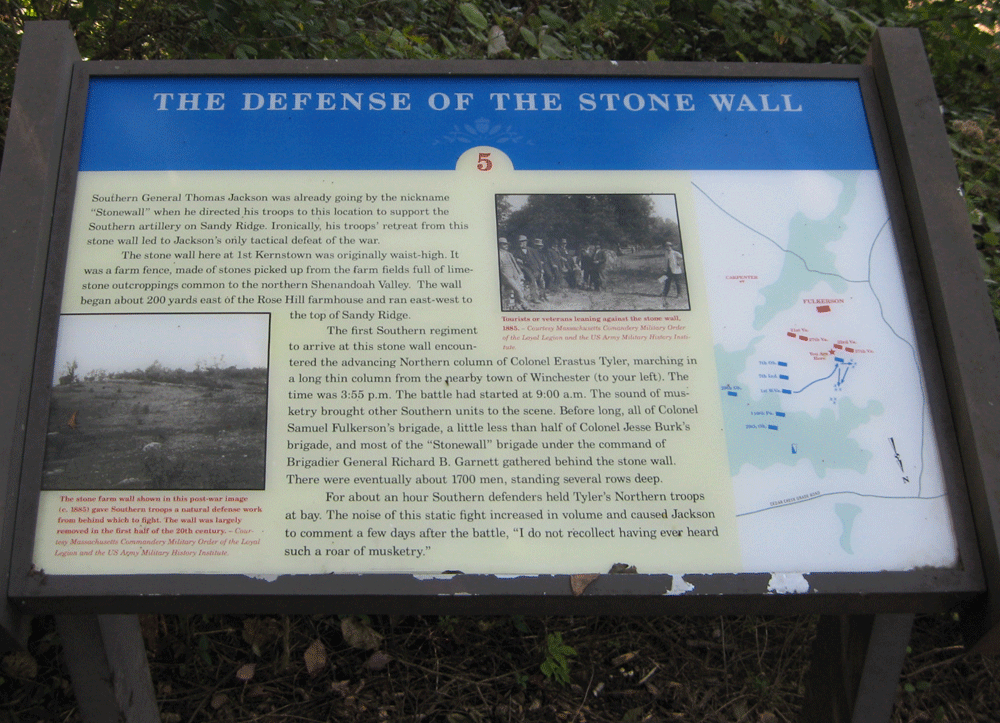Winchester > First Battle of Kernstown > Rose Hill
The Defense of the Stone Wall wayside marker is the fifth stop on the self-guided walking tour of the First Kerstown battlefield at Rose Hill. Rose Hill is administered by the Museum of the Shenandoah Valley. The walking tour of the Rose Farm is open at limited times. Check with the Museum’s website for availability.

From the marker:
The Defense of the Stone Wall
Southern General Thomas Jackson was already going by the nickname “Stonewall” when he directed his troops to this location to support the Southern artillery on Sandy Ridge. Ironically, his troops’ retreat from this stone wall led to Jackson’s only tactical defeat of the war.
The stone wall here at 1st Kernstown was originally waist-high. It was a farm fence, made of stones picked up from the farm fields full of limestone outcroppings common to the northern Shenandoah Valley. The wall began about 200 yards east of the Rose Hill farmhouse and ran east-west to the top of Sandy Ridge.
The first Southern regiment to arrive at this stone wall encountered the advancing Northern column of Colonel Erastus Tyler, marching in a long thin column from the nearby town of Winchester (to your left). The time was 3:55 p.m. The battle had started at 9:00 a.m. The sound of musketry brought other Southern units to the scene. Before long, all of Colonel Samuel Fulkerson’s brigade, a little less than half of Colonel Jesse Burk’s brigade, and most of the “Stonewall” brigade under the command of Brigadier General Richard B. Garnett gathered behind the stone wall. There were eventually about 1700 men, standing several rows deep.
For about an hour Southern defenders held Tyler’s Northern troops at bay. The noise of this static fight increased in volume and caused Jackson to comment a few days after the battle, “I do not recollect having ever heard such a roar of musketry.”
From the caption to the photo at the left:
The stone farm wall shown in this post-war image (c.1885) gave Southern troops a natural defense work from behind which to fight. The wall was largely removed in the first half of the 20th century. -Courtesy Massachusetts Commandery Military Order of the Loyal Legion and the U.S. Army Military History Institute
From the caption to the photo at the top center:
Tourists or veterans leaning against the stone wall, 1885. -Courtesy Massachusetts Commandery Military Order of the Loyal Legion and the U.S. Army Military History Institute

